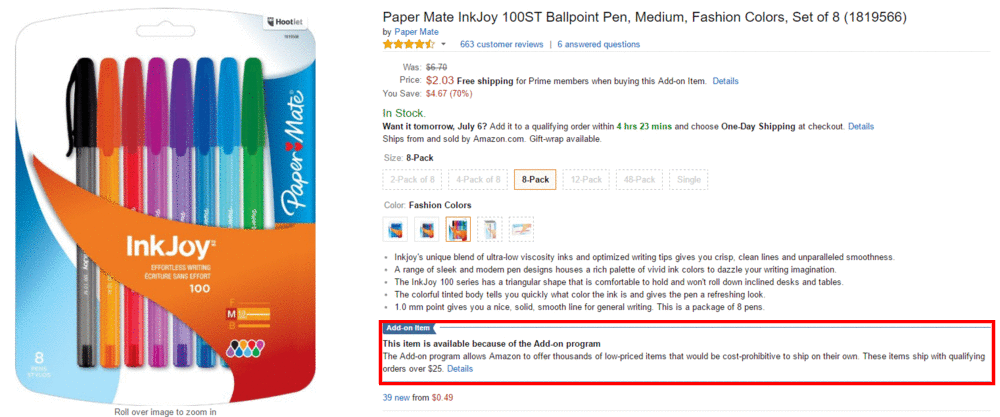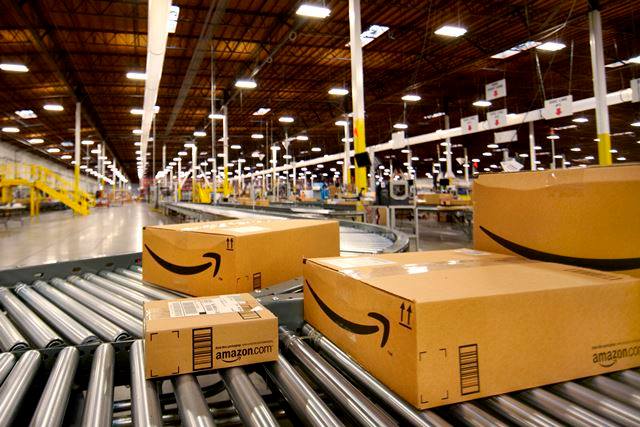5 Quick Tips to Manage FBA Fees


By now sellers in the Amazon space understand the benefits associated with Fulfillment by Amazon (FBA). There is extreme value in outsourcing the complexity of product fulfillment to the king of marketplaces, Amazon. However, there are still some unanswered questions regarding the nuances of Amazon’s FBA services.
Contrary to popular belief, some sellers using FBA are actually losing money per unit sold instead of earning money.
Although Amazon has been fairly transparent with the fees associated with their fulfillment solution, some sellers unknowingly pay more FBA fees then they are required to. In certain circumstances, some sellers would actually profit from either modifying aspects of their FBA strategy, or from switching back to FBM.
Unfortunately sellers have to make that decision for themselves which leaves room for mistakes. This article will cover a few common FBA pitfalls that could be hurting your Amazon ROI.
Before getting into the most common FBA pitfalls, let’s do a quick overview of the costs that make up the FBA fee.
Amazon breaks down fulfillment by FBA fees into three categories: referral fees, variable closing per item fees, and order fulfillment fees.
The referral fee is the standard fee every seller has to pay for using the Amazon marketplace. The standard referral fee is 15%, however fees can vary slightly depending on the product category.
The variable closing per item fee is charged per item in addition to the referral fee for any seller not paying the monthly subscription fee to Amazon. The dollar value of the variable closing fee varies depending on product category.
The order fulfillment fee is the accumulation of three separate costs. Order handling per order, pick and pack per unit, and weight handling per pound. Weight and handling per pound is a variable fee that is charged based on the weight of your product, and the product size tier your product falls into. The order handling, and pick and pack costs are standardized based on the product size tier that your product falls into. Find out more about product size tier specifications here:

Sellers that sell products on Amazon at lower prices need to be wary of add on products. “Add on” products are products Amazon does not allow to be sold alone in a single purchase. If a customer wants to buy an “add on” product, he or she must couple it with another product adding to the overall sale price.
Unfortunately as a seller you can’t choose whether or not your product is featured as an add on, however increasing prices can potentially convince Amazon to remove the label. There is an undefined price threshold that Amazon uses to determine whether a product would be better served as an add on.
Not only do add on products affect your ability to convert customers, but they also increase FBA fees as well.
Unfortunately instead of overlooking the fulfillment by FBA fees for the required additional item, Amazon adds the fulfillment by FBA fees of the two products together. This means that the only entity profiting from this transaction is Amazon. To be on the safe side, we recommend doing the research and making sure that your add on products are still profitable.

Another way unwanted costs can occur is through your FBA shipping plan. An FBA shipping plan is the data sheet that a seller sends to Amazon to tell them how many units they are shipping Amazon, and where Amazon should ship those units too.
Most sellers ship all their products to a single FC, allowing the masterminds at Amazon to determine which FCs around the country to allocate their products to. I know initially it seems easier to let Amazon set a shipping plan, but in the long run creating your own custom shipping plan will save you money.
You can create your own shipping plan by following the instructions on Amazon’s shipping plan request guide.
Amazon is famous for moving product around testing different markets in order to find the optimal location for your product. The only issue is every time Amazon ships your product, you end up paying for it in shipping fees.
For example, if you are selling snow blowers in New England during winter, Amazon might test the California market to see if it could be profitable. As a seller you would be charged for the shipping cost to move the snow blowers to California, and later charged again to move them back to New England.
A simple way to tell whether Amazon is relocating your product or not is checking your product availability. Amazon uses the term “reserved” to say that your products have been received by Amazon, however they are not up for sale yet.
This usually means that Amazon is relocating your products to different fulfillment centers thus incurring shipping costs. That’s why understanding your target market, and developing your own shipping plan could save you money in shipping related FBA fees.

Long term storage fees kick in after a specific product has been sitting on the shelves of a fulfillment center for over 6 months.
These fees are issued on August 15th and February 15th of each year, and are charged $11.25 per cubic foot of space that they take up. If after a year your products still remain on the shelves, Amazon doubles your fees and charges $22.50.
These fees can be pricey and result in a loss in potential revenue. It’s important to practice good inventory management and only ship enough inventory to meet forecasted sales demand.
To learn more about managing long term storage fees, check out our article here.

Most sellers understand how Amazon breaks down your FBA fees into three categories, Order Handling, Pick and Pack, and Weight Handling.
However do you actually know what goes into those three buckets? Understanding what elements of your product raises FBA prices is key to FBA success.
For example, weight and handling is a huge FBA factor that is often overlooked. If you are selling a large product, odds are that you are paying for it in FBA fees. Make sure that your margins are large enough to pay pricey fulfillment by FBA fees if you are selling heavy products.
Think about it from Amazon’s perspective, the more effort that it takes them to properly fulfill your product, the more they will charge you in the end.
One thing new sellers often forget is the lead time it takes for your product to become available on Amazon. Amazon is extraordinarily fast when it comes to processing your products, however this does not mean you should ship Amazon your product the day they become unavailable online.
Although there is no fee associated with failing to timely restock inventory, there is an opportunity cost involved. Make sure you are avidly keeping track of your Amazon inventory, and send in products ahead of time to keep your Amazon sales momentum going strong.
